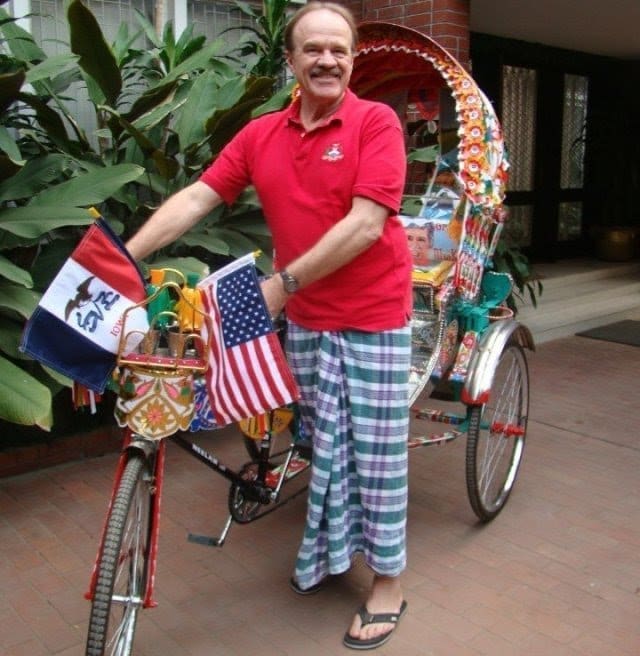It is the eighth-most populous country in the world, with a population exceeding 162 million people.In terms of land mass, Bangladesh ranks 92nd, spanning 148,460 square kilometres (57,320 sq mi), making it one of the most densely-populated countries in the world. Bangladesh shares land borders with India to the west, north, and east, Myanmar to the southeast, and the Bay of Bengal to the south. It is narrowly separated from Nepal and Bhutan by the Siliguri Corridor, and from China by Sikkim, in the north, respectively. Dhaka, the capital and largest city, is the nation’s economic, political and cultural hub. Chittagong, the largest sea port, is the second-largest city.
Bangladesh forms the larger and eastern part of the Bengal region.According to the ancient sacred Indian texts, Ramayana and Mahabharata, the Vanga Kingdom, one of the namesakes of the Bengal region, was a strong naval ally of the legendary Ayodhya. In the ancient and classical period of the Indian subcontinent, the territory was home to many principalities, including the Pundra, Gangaridai, Gauda, Samatata and Harikela. It was also a Mauryan province under the reign of Ashoka. The principalities were notable for their overseas trade, contacts with the Roman world, export of fine muslin and silk to the Middle East, and spreading of philosophy and art to Southeast Asia. The Pala Empire, the Chandra dynasty, and the Sena dynasty were the last pre-Islamic Bengali middle kingdoms. Islam was introduced during the Pala Empire, through trade with the Abbasid Caliphate, but following the early conquest of Bakhtiyar Khalji and the subsequent establishment of the Delhi Sultanate and preaching of Shah Jalal in East Bengal, the faith fully spread across the region. In 1576, the wealthy Bengal Sultanate was absorbed into the Mughal Empire, but its rule was briefly interrupted by the Suri Empire. Following the death of Emperor Aurangzeb in the early 1700s, the proto-industrialised Mughal Bengal became a semi-independent state under the Nawabs of Bengal. The region was later conquered by the British East India Company at the Battle of Plassey in 1757.
The borders of modern Bangladesh were established with the separation of Bengal and India in August 1947, when the region became East Pakistan as a part of the newly formed Dominion of Pakistan, demarcated by the Boundary of the Partition of India.Later the rise of a pro-democracy movement thrived on Bengali nationalism and self-determination, leading to the Liberation War and eventually resulted in the emergence of Bangladesh as a sovereign and independent nation in 1971.
Language
The predominant language of Bangladesh is Bengali (also known as Bangla). Bengali is the one of the easternmost branches of the Indo-European language family. It is a part of the Eastern Indo-Aryan languages in South Asia, which developed between the 10th and 13th centuries. Bengali is written using the Bengali script. In ancient Bengal, Sanskrit was the language of written communication, especially by priests. During the Islamic period, Sanskrit was replaced by Bengali as the vernacular language. The Sultans of Bengal promoted the production of Bengali literature instead of Sanskrit. Bengali also received Persian and Arabic loanwords during the Sultanate of Bengal. Under British rule, Bengali was significantly modernised by Europeans. Modern Standard Bengali emerged as the lingua franca of the region. A heavily Sanskritized version of Bengali was employed by Hindu scholars during the Bengali Renaissance. Muslim writers such as Kazi Nazrul Islam gave attention to the Persian and Arabic vocabulary of the language.
Today, the Bengali language standard is prescribed by the Bangla Academy in Bangladesh. More than 98 percent of people in Bangladesh speak Bengali as their native language.Bengali is described as a dialect continuum where there are various dialects spoken throughout the country. Currently there is a diglossia in which much of the population are able to understand or speak Standard Colloquial Bengali and in their regional dialect, these include the most distinct dialects (some consider as separate languages) such as Chittagonian or Sylheti. The Bengali Language Implementation Act, 1987 made it mandatory to use Bengali in all government affairs in Bangladesh.Although laws were historically written in English, they were not translated into Bengali until the Bengali Language Implementation Act of 1987. All subsequent acts, ordinances and laws have been promulgated in Bengali since 1987.English is often used in the verdicts delivered by the Supreme Court of Bangladesh, and is also used in higher education.
Visual arts
The recorded history of art in Bangladesh can be traced to the 3rd century BCE, when terracotta sculptures were made in the region. In classical antiquity, a notable school of sculptural Hindu, Jain and Buddhist art developed in the Pala Empire and the Sena dynasty. Islamic art evolved since the 14th century. The architecture of the Bengal Sultanate saw a distinct style of domed mosques with complex niche pillars that had no minarets. Mughal Bengal’s most celebrated artistic tradition was the weaving of Jamdani motifs on fine muslin, which is now classified by UNESCO as an intangible cultural heritage. Jamdani motifs were similar to Iranian textile art (buta motifs) and Western textile art (paisley). The Jamdani weavers in Dhaka received imperial patronage.[65][363] Ivory and brass were also widely used in Mughal art. Pottery is widely used in Bengali culture.
The modern art movement in Bangladesh took shape during the 1950s, particularly with the pioneering works of Zainul Abedin. East Bengal developed its own modernist painting and sculpture traditions, which were distinct from the art movements in West Bengal. The Art Institute Dhaka has been an important center for visual art in the region. Its annual Bengali New Year parade was enlisted as an intangible cultural heritage by UNESCO in 2016.
Modern Bangladesh has produced many of South Asia’s leading painters, including SM Sultan, Mohammad Kibria, Shahabuddin Ahmed, Kanak Chanpa Chakma, Kafil Ahmed, Saifuddin Ahmed, Qayyum Chowdhury, Rashid Choudhury, Quamrul Hassan, Rafiqun Nabi and Syed Jahangir, among others. Novera Ahmed and Nitun Kundu were the country’s pioneers of modernist sculpture.
In recent times, photography as a medium of art has become popular. Biennial Chobi Mela is considered the largest photography festival in Asia.
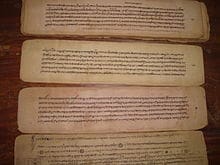
Women in Bangladesh
Although, as of 2015, several women occupied major political office in Bangladesh, its women continue to live under a patriarchal social regime where violence is common. Whereas in India and Pakistan women participate less in the workforce as their education increases, the reverse is the case in Bangladesh.
Bengal has a long history of feminist activism dating back to the 19th century. Begum Rokeya and Faizunnessa Chowdhurani played an important role in emancipating Bengali Muslim women from purdah, prior to the country’s division, as well as promoting girls’ education. Several women were elected to the Bengal Legislative Assembly in the British Raj. The first women’s magazine, Begum, was published in 1948.
In 2008, Bangladeshi female workforce participation stood at 26%.Women dominate blue collar jobs in the Bangladeshi garment industry. Agriculture, social services, healthcare and education are also major occupations for Bangladeshi women, while their employment in white collar positions has steadily increased.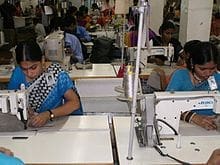
Architecture
The architectural traditions of Bangladesh have a 2,500-year-old heritage.Terracotta architecture is a distinct feature of Bengal. Pre-Islamic Bengali architecture reached its pinnacle in the Pala Empire, when the Pala School of Sculptural Art established grand structures such as the Somapura Mahavihara. Islamic architecture began developing under the Bengal Sultanate, when local terracotta styles influenced medieval mosque construction. The Adina Mosque of United Bengal was the largest mosque built on the Indian subcontinent.
The Sixty Dome Mosque was the largest medieval mosque built in Bangladesh, and is a fine example of Turkic-Bengali architecture. The Mughal style replaced indigenous architecture when Bengal became a province of the Mughal Empire and influenced the development of urban housing. The Kantajew Temple and Dhakeshwari Temple are excellent examples of late medieval Hindu temple architecture. Indo-Saracenic Revival architecture, based on Indo-Islamic styles, flourished during the British period. The zamindar gentry in Bangladesh built numerous Indo-Saracenic palaces and country mansions, such as the Ahsan Manzil, Tajhat Palace, Dighapatia Palace, Puthia Rajbari and Natore Rajbari.
Bengali vernacular architecture is noted for pioneering the bungalow. Bangladeshi villages consist of thatched roofed houses made of natural materials like mud, straw, wood and bamboo. In modern times, village bungalows are increasingly made of tin.
Muzharul Islam was the pioneer of Bangladeshi modern architecture. His varied works set the course of modern architectural practice in the country. Islam brought leading global architects, including Louis Kahn, Richard Neutra, Stanley Tigerman, Paul Rudolph, Robert Boughey and Konstantinos Doxiadis, to work in erstwhile East Pakistan. Louis Kahn was chosen to design the National Parliament Complex in Sher-e-Bangla Nagar. Kahn’s monumental designs, combining regional red brick aesthetics, his own concrete and marble brutalism and the use of lakes to represent Bengali geography, are regarded as one of the masterpieces of the 20th century. In more recent times, award-winning architects like Rafiq Azam have set the course of contemporary architecture by adopting influences from the works of Islam and Kahn.

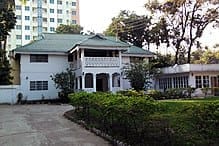
Textiles
The Nakshi Kantha is a centuries-old embroidery tradition for quilts, said to be indigenous to eastern Bengal (i.e. Bangladesh). The sari is the national dress for Bangladeshi women. Mughal Dhaka was renowned for producing the finest Muslin saris, as well as the famed Dhakai and Jamdani, the weaving of which is listed by UNESCO as one of the masterpieces of humanity’s intangible cultural heritage.Bangladesh also produces the Rajshahi silk. The shalwar kameez is also widely worn by Bangladeshi women. In urban areas some women can be seen in western clothing. The kurta and sherwani are the national dress of Bangladeshi men; the lungi and dhoti are worn by them in informal settings. Aside from ethnic wear, domestically tailored suits and neckties are customarily worn by the country’s men in offices, in schools and at social events.
The handloom industry supplies 60–65% of the country’s clothing demand.[380] The Bengali ethnic fashion industry has flourished in the changing environment of the fashion world. The retailer Aarong is one of the most successful ethnic wear brands in South Asia. The development of the Bangladesh textile industry, which supplies leading international brands, has promoted the production and retail of modern Western attire locally, with the country now having a number of expanding local brands like Westecs and Yellow. Bangladesh is the world’s second largest garments exporter. Among Bangladesh’s fashion designers, Bibi Russell has received international acclaim for her “Fashion for Development” shows.
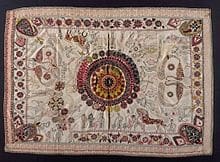
Cuisine
White rice is the staple of Bangladeshi cuisine, along with many vegetables and lentils. Rice preparations also include Bengali biryanis, pulaos, and khichuris. Mustard sauce, ghee, sunflower oil and fruit chutneys are widely used in Bangladeshi cooking. Fish is the main source of protein in Bengali cuisine. The Hilsa is the national fish and immensely popular across Bangladesh. Other kinds of fish eaten include rohu, butterfish, catfish, tilapia and barramundi. Fish eggs are a gourmet delicacy. Seafood holds an important place in Bengali cuisine, especially lobsters, shrimps and dried fish. Meat consumption includes chicken, beef, mutton, venison, duck and squab. In Chittagong, Mezban feasts are a popular tradition featuring the serving of hot beef curry. In Sylhet, the shatkora lemons are used to marinate dishes. In the tribal Hill Tracts, bamboo shoot cooking is prevalent. Bangladesh has a vast spread of desserts, including distinctive sweets like Rôshogolla, Rôshomalai, Chomchom, Mishti Doi and Kalojaam. Pithas are traditional boiled desserts made with rice or fruits. Halwa is served during religious festivities. Naan, paratha, luchi and bakarkhani are the main local breads. Milk tea is offered to guests as a gesture of welcome and is the most common hot beverage in the country. Kebabs are widely popular across Bangladesh, particularly seekh kebabs, chicken tikka and shashliks.
Bangladesh shares its culinary heritage with the neighbouring Indian state of West Bengal. The two regions have several differences, however. In Muslim-majority Bangladesh, meat consumption is greater; whereas in Hindu-majority West Bengal, vegetarianism is more prevalent. The Bangladeshi diaspora dominates the South Asian restaurant industry in many Western countries, particularly in the United Kingdom.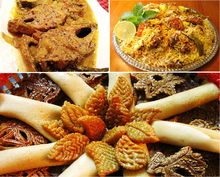
Festival
Pahela Baishakh, the Bengali new year, is the major festival of Bengali culture and sees widespread festivities. Of the major holidays celebrated in Bangladesh, only Pahela Baishakh comes without any pre-existing expectations (specific religious identity, culture of gift-giving, etc.) and has become an occasion for celebrating the simpler, rural roots of the Bengal. Other cultural festivals include Nabonno, and Poush Parbon both of which are Bengali harvest festivals.
The Muslim festivals of Eid al-Fitr, Eid al-Adha, Milad un Nabi, Muharram, Chand Raat, Shab-e-Barat; the Hindu festivals of Durga Puja, Janmashtami and Rath Yatra; the Buddhist festival of Buddha Purnima, which marks the birth of Gautama Buddha, and Christian festival of Christmas are national holidays in Bangladesh and see the most widespread celebrations in the country. The two Eids are celebrated with long streak of public holidays and give the city-dwellers opportunity to celebrate the festivals with their families outside city.
Museums and libraries
The Varendra Research Museum is the oldest museum in Bangladesh. It houses important collections from both the pre-Islamic and Islamic periods, including the sculptures of the Pala-Sena School of Art and the Indus Valley Civilization; as well as Sanskrit, Arabic and Persian manuscripts and inscriptions. The Ahsan Manzil, the former residence of the Nawab of Dhaka, is a national museum housing collections from the British Raj. It was the site of the founding conference of the All India Muslim League and hosted many British Viceroys in Dhaka.
The Tajhat Palace Museum preserves artefacts of the rich cultural heritage of North Bengal, including Hindu-Buddhist sculptures and Islamic manuscripts. The Mymensingh Museum houses the personal antique collections of Bengali aristocrats in central Bengal. The Ethnological Museum of Chittagong showcases the lifestyle of various tribes in Bangladesh. The Bangladesh National Museum is located in Ramna, Dhaka and has a rich collection of antiquities. The Liberation War Museum documents the Bangladeshi struggle for independence and the 1971 genocide.
In ancient times, manuscripts were written on palm leaves, tree barks, parchment vellum and terracotta plates and preserved at monasteries known as viharas. The Hussain Shahi dynasty established royal libraries during the Bengal Sultanate. Libraries were established in each district of Bengal by the zamindar gentry during the Bengal Renaissance in the 19th century. The trend of establishing libraries continued until the beginning of World War II. In 1854, four major public libraries were opened, including the Bogra Woodburn Library, the Rangpur Public Library, the Jessore Institute Public Library and the Barisal Public Library.
Costume
Bangladeshi people have unique dress preferences. Bangladeshi men traditionally wear Panjabi on religious and cultural occasions. Bangladeshi men wear Lungi as casual wear (in rural areas) and shirt-pant or suits on formal occasions. Shari is the main and traditional dress of Bangladeshi women also and some young female also wear Salwar Kameez. In urban areas, women can also be seen wearing Western clothes. The women also have a different preference to which types of Sharee or any other popular dess like Salwar Kameez they would like to wear. Whether it may be silk sharis, georgette sharis, or designer sharis, each particular fabric contributes to representing the culture overall. Weaving the fabric for these dresses is a traditional art in Bangladesh. Bangladeshi people have unique dress preferences. Bangladeshi men traditionally wear Panjabi on religious and cultural occasions. Bangladeshi men wear Lungi as casual wear (in rural areas) and shirt-pant or suits on formal occasions. Shari is the main and traditional dress of Bangladeshi women also and some young female also wear Salwar Kameez. In urban areas, women can also be seen wearing Western clothes. The women also have a different preference to which types of Sharee or any other popular dess like Salwar Kameez they would like to wear. Whether it may be silk sharis, georgette sharis, or designer sharis, each particular fabric contributes to representing the culture overall. Weaving the fabric for these dresses is a traditional art in Bangladesh.






